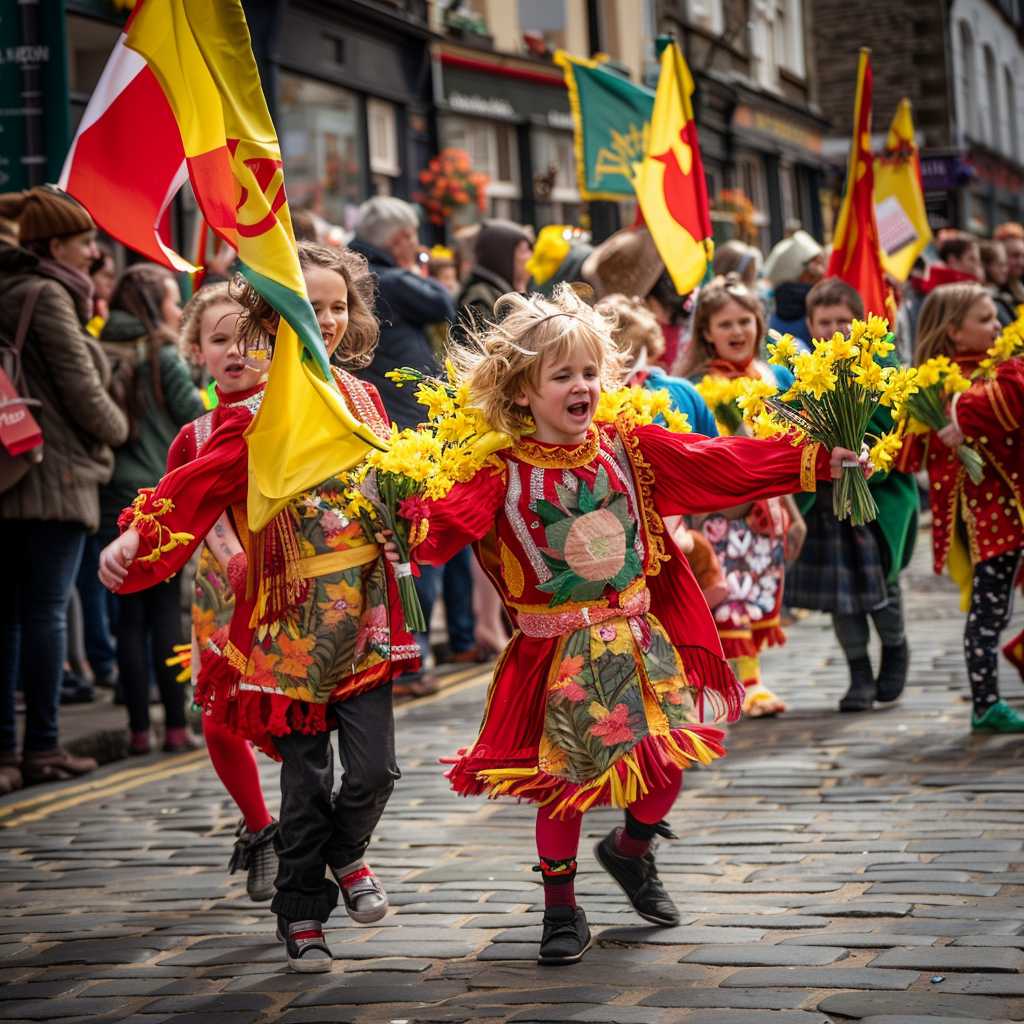St. David’s Day: Celebrating Wales’ Patron Saint with Tradition and Pride
St. David’s Day, held on the 1st of March each year, is a feast day in honor of St. David, the patron saint of Wales. This significant cultural and religious occasion brings together Welsh people across the globe to celebrate their heritage and history through a variety of customs, festivities, and traditions. From the emblematic leeks and daffodils to the vibrant parades and performances, St. David’s Day offers a rich representation of Welsh identity.
The Life and Legacy of St. David
St. David, known in Welsh as Dewi Sant, was a Celtic monk who spread Christianity throughout Wales and beyond during the early 6th century. Accounts of his life suggest he performed several miracles, with his most famous being when he caused a hill to rise beneath him while preaching so that everyone could hear his words. Beyond his mystical achievements, St. David founded numerous churches and a monastery in Glyn Rhosyn (St David’s) in Pembrokeshire, which became a major Christian shrine.
The legacy of St. David is one steeped in asceticism and moral character; his last words to his followers are often quoted during St. David’s Day: “Do the little things, the small things you’ve seen me doing.” These words encapsulate the humble and persistent nature of Welsh culture—themes that are echoed every year throughout the celebrations.
Traditional Festivities and Modern Observances
St. David’s Day is marked by a multitude of ceremonies that vary from town to town but invariably include parades with participants adorned in traditional Welsh costume. These costumes feature the iconic tall black hats for women, complemented by red shawls and petticoats, celebrated as national dress ties connecting today’s citizenry to their ancestry.
Educational institutions host eisteddfodau—cultural festivals with music, poetry readings, and performance arts—from primary-grade school children up through university scholars, keeping ancient Welsh literature and artistry alive in modern practice. The national flag is displayed prominently on buildings across the country, while badges depicting the insignia’s red dragon or images of St. David are worn by celebrants everywhere.
Symbols of Wales Displayed with Pride
On St. David’s Day, symbols steeped in tradition showcase Welsh pride while delivering snapshots of its culture. Two natural emblems represent Wales during these celebrations: the leek and the daffodil. The origins of these emblems stem from different historic tales, with one popular account claiming soldiers of ancient Briton were identifiable by leeks pinned to their uniforms during battle.
Evidently auspicious, leeks and daffodils appear all over Wales on St. David’s Day—from culinary dishes using leeks to children donning paper daffodils clipped to their clothes—as vestiges that speak both to plentiful nature throughout the country and also to a nationalistic touchstone etched in memory for generations.
The Role of Food in Celebration
Welsh cuisine also takes centre stage on St. David’s Day, bringing communities together through traditional dishes like cawl (a hearty vegetable and meat soup), bara brith (a fruit loaf), and Welsh cakes—a testimony to how gatherings around food can foster social bonds and pass down customs through the medium of culinary delights.
Global Celebrations: From Local Communities to Diaspora
Even beyond its borders, expat communities and individuals celebrate St. David’s Day across the globe from North America to Australia. These celebrations re-affirm connections amongst those spread far from home, weaving the Welsh diaspora closer as they unite in communal revelries and dinners that radiate a fondness for their common heritage.
Notes
Image Description: A vibrant parade scene encapsulating the spirit of St. David’s Day — children dressed in traditional Welsh costumes walk alongside adults carrying large Welsh flags; a crowd dotted with bright yellow daffodils watches on with cheer; at their feet lie signs indicating the significance of this cultural moment for Wales against a background resonating with song and celebration.
